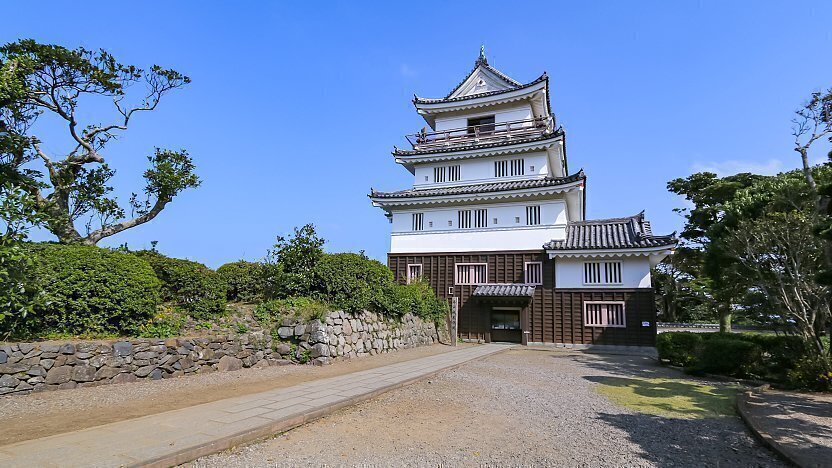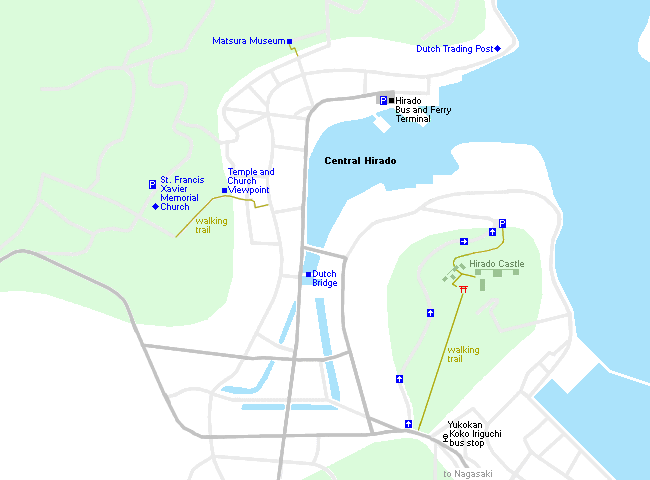Hirado Castle

Hirado Castle (平戸城, Hiradojō) stands on a hill guarding Hirado Port and the Hirado Strait, which used to be part of an important trade route between Japan and the Asian mainland. The original fortress was built in 1599 by the local Matsura Lord; however, he destroyed the structure after fighting the Tokugawa on the losing side of the Battle of Sekigahara as a gesture of loyalty to the victor. The clan continued ruling Hirado for the next two and a half centuries.
A new castle (also known as Kameoka Castle) was built on the site a hundred years later in 1718 as part of the coastal defenses erected during Japan's self imposed seclusion. This structure stood for over 150 years, but eventually fell into disrepair and was dismantled during the Meiji Period. Today, the Kitakoguchi-mon Gate and the Tanuki Yagura watch tower are the only original structures still standing. The castle's current five-story keep is a concrete reconstruction built in the 1960s together with four of the castle's destroyed watch towers.

Various artifacts of the Matsura Clan and items from Japan's feudal period are displayed inside the castle buildings. They include drawings, prints, documents, armor and weapons, including a unique sword that is purported to have been carried by a general during an invasion of Korea in Japan's early history. Other exhibits include items related to foreign trade and Christianity.
The 50 meter high castle keep houses an observation deck on its top floor that offers panoramic views over central Hirado. The rest of the castle grounds have been turned into a public park with two shrines and a few walking trails.

Getting there and around
Hirado Castle stands on a hill across the water from the Hirado Bus Terminal. From the bus terminal, it can be reached on foot in about 15-20 minutes. Alternatively, the castle can be reached in a five minute walk from the Yukokan Koko Iriguchi (猶興館高校入口) bus stop which is served by local buses as well as the buses that run between Sasebo and Hirado.
How to get to and around Hirado

Hours and Fees
Hours
Closed
Admission
Questions? Ask in our forum.


